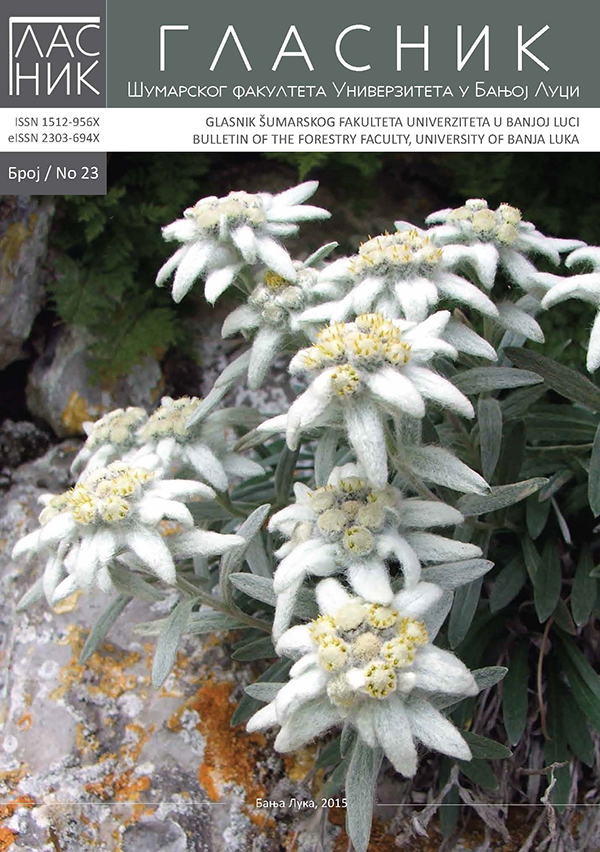Natura 2000 in Bosnia and Herzegovina and Forestry
DOI:
https://doi.org/10.7251/GSF1523135GKeywords:
Bosnia and Herzegovina, conservation status indicators, forest habitats, forest management, forest species, Natura 2000Abstract
Forestry has a major impact on the preservation of biodiversity in Europe and in BiH, where forests cover more than half of the territory. Before joining the European Union it is important that forestry activities are in line with EU regulations in the field of nature protection, especially with the Birds Directive and the Habitats Directive. It is particularly important that the forest habitat types and forest related species of the proposed Natura 2000 sites in BiH, where they represent 19 percent of its territory (Figure 1), are maintained in a favourable status, which depends on their environmental attributes. In order to be able to assess whether forest habitat types and habitats of species, which in individual Natura 2000 sites appear in specific combination, are in a good conservation status, indicators to assess the conservation status are proposed following the approaches in some other countries (Table 1). As far as the habitat types are concerned, according to the indicators proposed, they would be in a favourable status if main and accompanying tree species characteristic for a particular site, would represent at least 70% in the growing stock and if undesirable native species would not cover more than 10% and non-native not more than 1% of a forest area (Table 2). In most habitat types natural regeneration of forest stands should be encouraged that would not take place on areas larger than 0.3 ha. In mixed fir-beech forests selection forestry practices are suggested, while on some very sensitive habitat types there shouldn’t be any interventions at all. In oak forests a bit larger clearings are proposed to enable oak as less shade tolerant species to regenerate naturally (Table 2). Reference values for the amount of dead wood, especially of larger diameter, should attain at least 3-6 m3 per ha or 5-9 m3 per ha, depending on habitat types. Average reference values suggested for old solitary trees in the forest are 3-6 trees per ha. Based on analysis of ecological requirements of the Habitats Directive Annex II and the Birds Directive Annex I species from the reference lists for the country, it was found out that 51 are forest dependent. Forests are particularly important habitat for xylofagous beetles, amphibians and mammals, but also for a number of birds (Table 3). Ecological requirements of these species were expressed through the following indicators, which were given values from 0-5 for each species (Table 4): (a) natural composition of trees / bushes; (b) vertically structured stands / balance of development phases; ( c ) presence of bushes; (d ) presence of open space; (e )presence of dead , hollow and large trees; (e ) presence of unpolluted water bodies and ( f ) sensitivity to disturbance and the hunting / gathering. Based on the values of indicators and using a cluster analysis method, the forest dependent species were arranged into 5 groups (Table 5-6) indicating different ecological requirements ranging from relatively open forest structures with bushes to close forests with a lot of dead wood and old trees. Both the ecological indicators for the favourable structure of the forest habitat types and the indicators for habitats of the forest dependant species should be taken into account in forest management planning in Natura 2000 sites containing various combinations of habitat types and species for whose conservation the Natura 2000 sites in BiH have been proposed.
Downloads
Published
Issue
Section
License
Copyright (c) 2015 Aleksander Golob, Đorđije Milanović

This work is licensed under a Creative Commons Attribution 4.0 International License.


